Coronavirus: Lockdowns continue to suppress European pollution
- Published

There is enough data to be confident in the observed changes

New data confirms the improvement in air quality over Europe - a byproduct of the coronavirus crisis.
The maps on this page track changes in nitrogen dioxide (NO2) - a pollutant that comes principally from the use of fossil fuels.
Lockdown policies and the resulting reductions in economic activity have seen emissions take a steep dive.
The maps were produced by the Royal Netherlands Meteorological Institute (KNMI).
The Dutch met office leads the Tropomi instrument on the Copernicus Sentinel-5P satellite, which monitors a number of atmospheric gases, including NO2.
The comparisons being made are for concentrations in the air from 14 to 25 March with the monthly average of concentrations for March 2019.
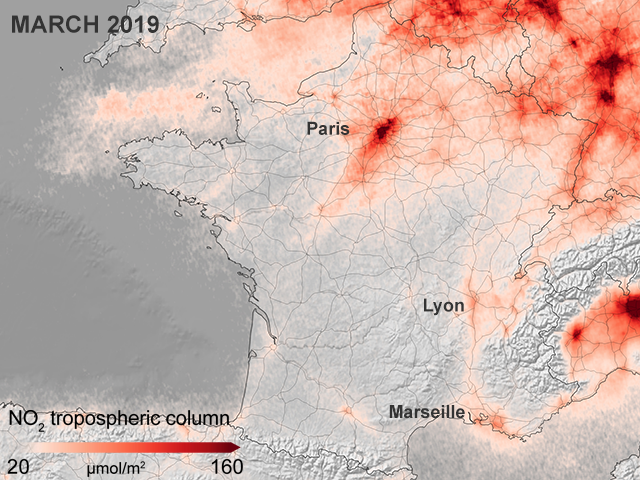
How France was looking a year ago

You typically have to take a 10-day average to get a good snapshot, says Dr Henk Eskes from KNMI: "You can't just use one day of data," he told BBC News.
"There's a lot of variability in NO2 from day to day. And that's real variability; it's not a measurement artefact, but it's just due to changes in the weather. So when the wind direction changes, or the wind speed changes, or the stability of the boundary layer changes - you will get different readings."
Combining data for the 10 days irons out much of this variability, enabling us to see the impact of changes due to human activity.
Sentinel-5P (S5P) maps have previously been released of China and Italy. The new one of Italy on this page again shows the marked reductions in the north of country where the Covid-19 outbreak has been at its most severe.
But there are also new maps here of France, Spain and Portugal.
Other countries in northern Europe are being closely monitored, including the Netherlands and the UK - but the KNMI scientists have observed a larger variability owing to changing weather conditions.
The time period to see the dip in concentrations in the UK is also quite short. Britain went into lockdown after some of its Western European neighbours.
New measurements from this week will help to assess the changes in nitrogen dioxide over the UK.
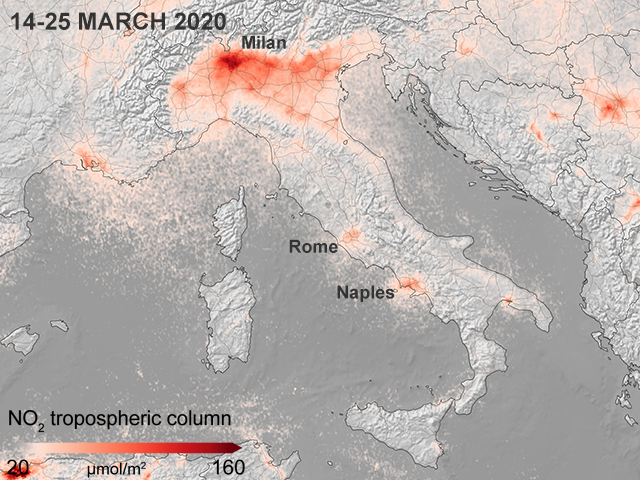
Italy in lockdown

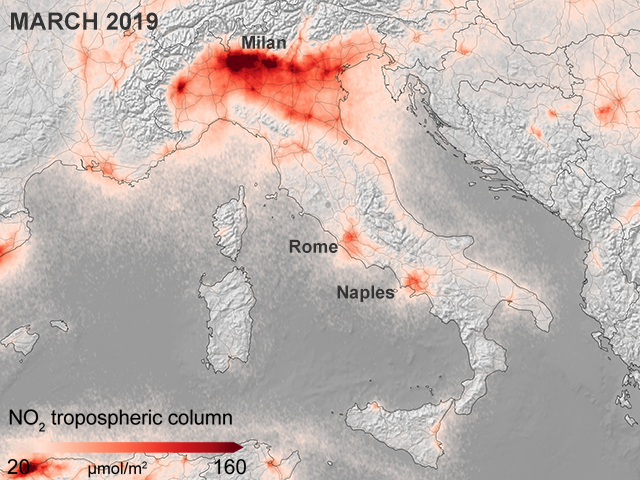
Italy's northern powerhouse as it looked last year

Sentinel-5P is part of the EU's Copernicus fleet of Earth observers, which are managed by the European Space Agency.
Built by Airbus in Britain, S5P was launched in October 2017.
It carries just the single instrument - Tropomi. This is a spectrometer that observes the reflected sunlight coming up off the Earth, analysing its many different colours.
In so doing, it can detect the presence in the atmosphere of a suite of trace gases such as nitrogen dioxide, ozone, formaldehyde, sulphur dioxide, methane, carbon monoxide and aerosols (small droplets and particles).
Scientists will combine S5P's data with a suite of atmospheric and transport models to fully understand the observations.
"For China, I think we have now very solid results, and that's in part because we have a long period already. And we have first indications of a recovery as people in China are starting to go back to work. We will closely follow the development to see if NO2 concentrations will return to pre-coronavirus levels," Dr Eske told BBC News.
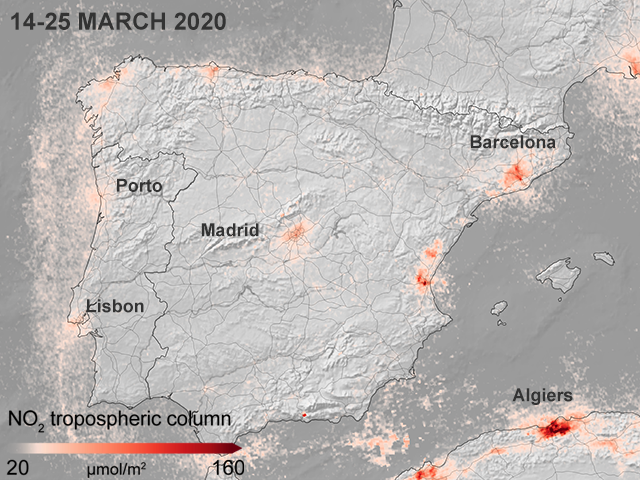
The big Spanish centres show a marked reduction in NO2

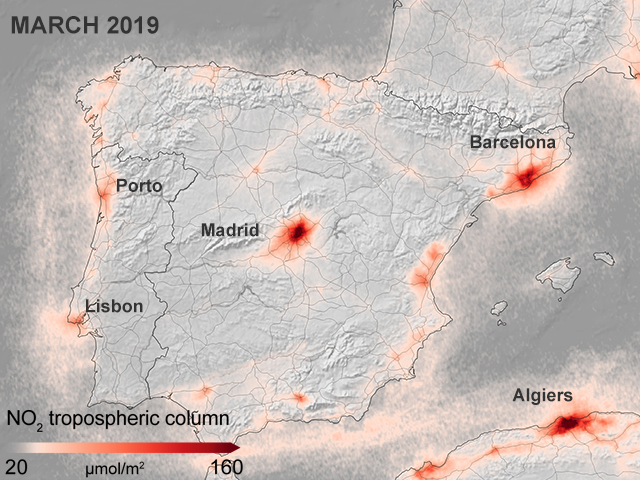
How Spain and Portugal were looking this time last year

Jonathan.Amos-INTERNET@bbc.co.uk, external and follow me on Twitter: @BBCAmos, external